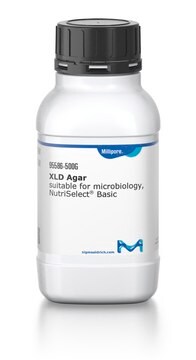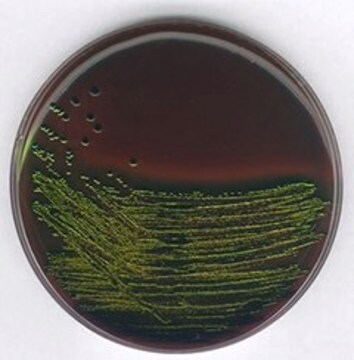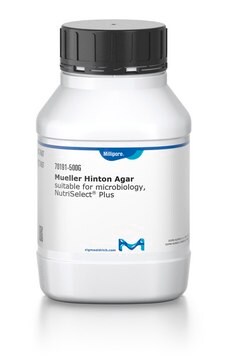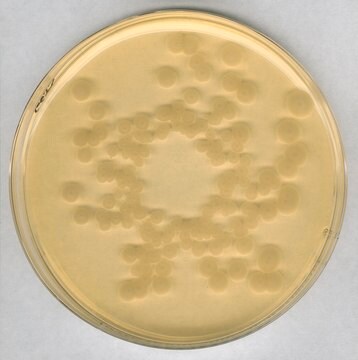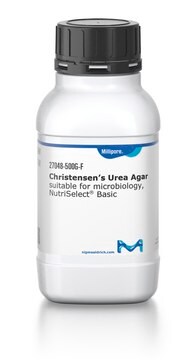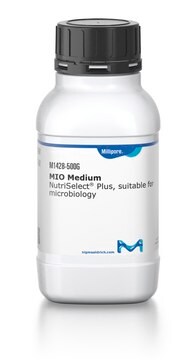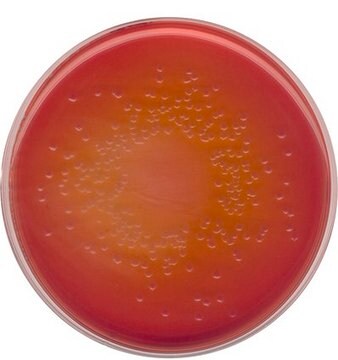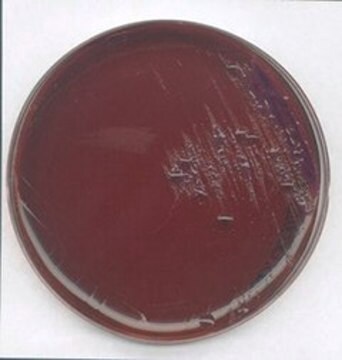44940
Triple Sugar Iron Agar
suitable for microbiology, NutriSelect® Basic
Sinónimos:
TSI Agar
About This Item
Productos recomendados
sterility
non-sterile
Quality Level
product line
BioChemika
form
powder
shelf life
limited shelf life, expiry date on the label
composition
agar, 12 g/L
ferrous sulfate, 0.2 g/L
glucose, 1 g/L
lactose, 10 g/L
meat extract, 3 g/L
mixed peptone, 20 g/L
phenol red, 0.025 g/L
sodium chloride, 5 g/L
sodium thiosulfate, 0.3 g/L
sucrose, 10 g/L
yeast extract, 3 g/L
manufacturer/tradename
NutriSelect® Basic
technique(s)
microbe id | utilization test: suitable
microbiological culture: suitable
final pH
7.4±0.2 (25 °C)
application(s)
clinical testing
environmental
food and beverages
pharmaceutical
water monitoring
microbiology
suitability
nonselective and differential for Citrobacter spp.
nonselective and differential for Escherichia coli
nonselective and differential for Klebsiella spp.
nonselective and differential for Proteus spp.
nonselective and differential for Salmonella spp.
nonselective and differential for Shigella spp.
nonselective and differential for coliforms
nonselective and differential for enterobacteriaceae
Application
Preparation Note
Other Notes
Footnote
The designations basic, plus, or prime are added to indicate the quality control level, from basic quality control to standard QC plus to prime for full regulatory compliance.
Legal Information
Storage Class
11 - Combustible Solids
wgk_germany
WGK 3
ppe
Eyeshields, Gloves, type N95 (US)
Elija entre una de las versiones más recientes:
¿Ya tiene este producto?
Encuentre la documentación para los productos que ha comprado recientemente en la Biblioteca de documentos.
Los clientes también vieron
Artículos
Sigma-Aldrich.com presents an article concerning Differentiation of Escherichia coli from coliforms.
Salmonella contamination is the second leading cause of food-borne illness worldwide. Controlling outbreaks of Salmonella is an important task for food regulators, restaurants and the food industry in general. The Salmonella family includes over 2,300 serotypes of bacteria, but two types, Salmonella enteritidis and Salmonella typhimurium, are responsible for about half of all human infections. Most outbreaks of Salmonella are traced back to dairy, poultry and meat products, but Salmonella can grow on nearly any food. Chicken, eggs and their derivative products are particularly high risk.
Nuestro equipo de científicos tiene experiencia en todas las áreas de investigación: Ciencias de la vida, Ciencia de los materiales, Síntesis química, Cromatografía, Analítica y muchas otras.
Póngase en contacto con el Servicio técnico
